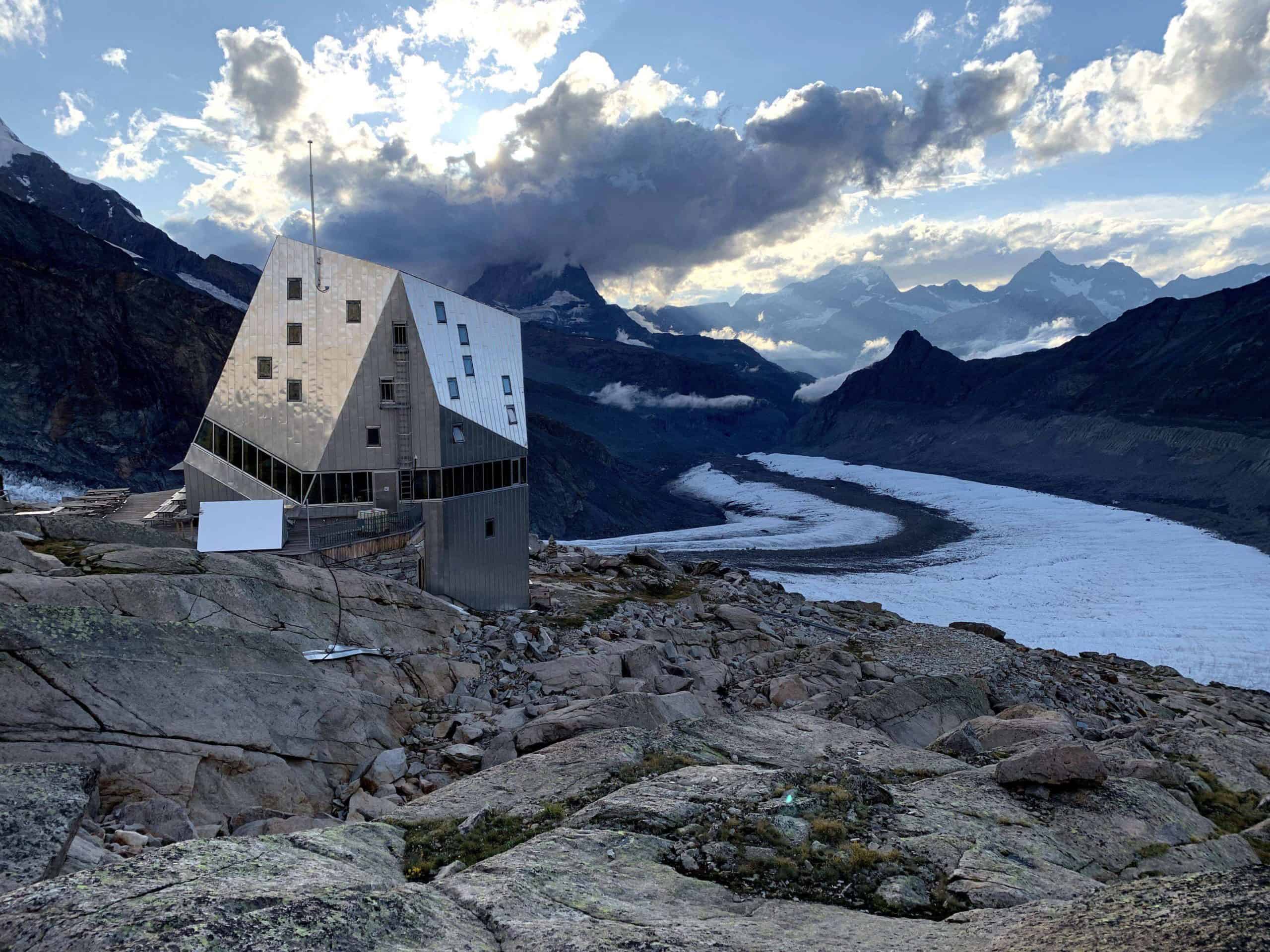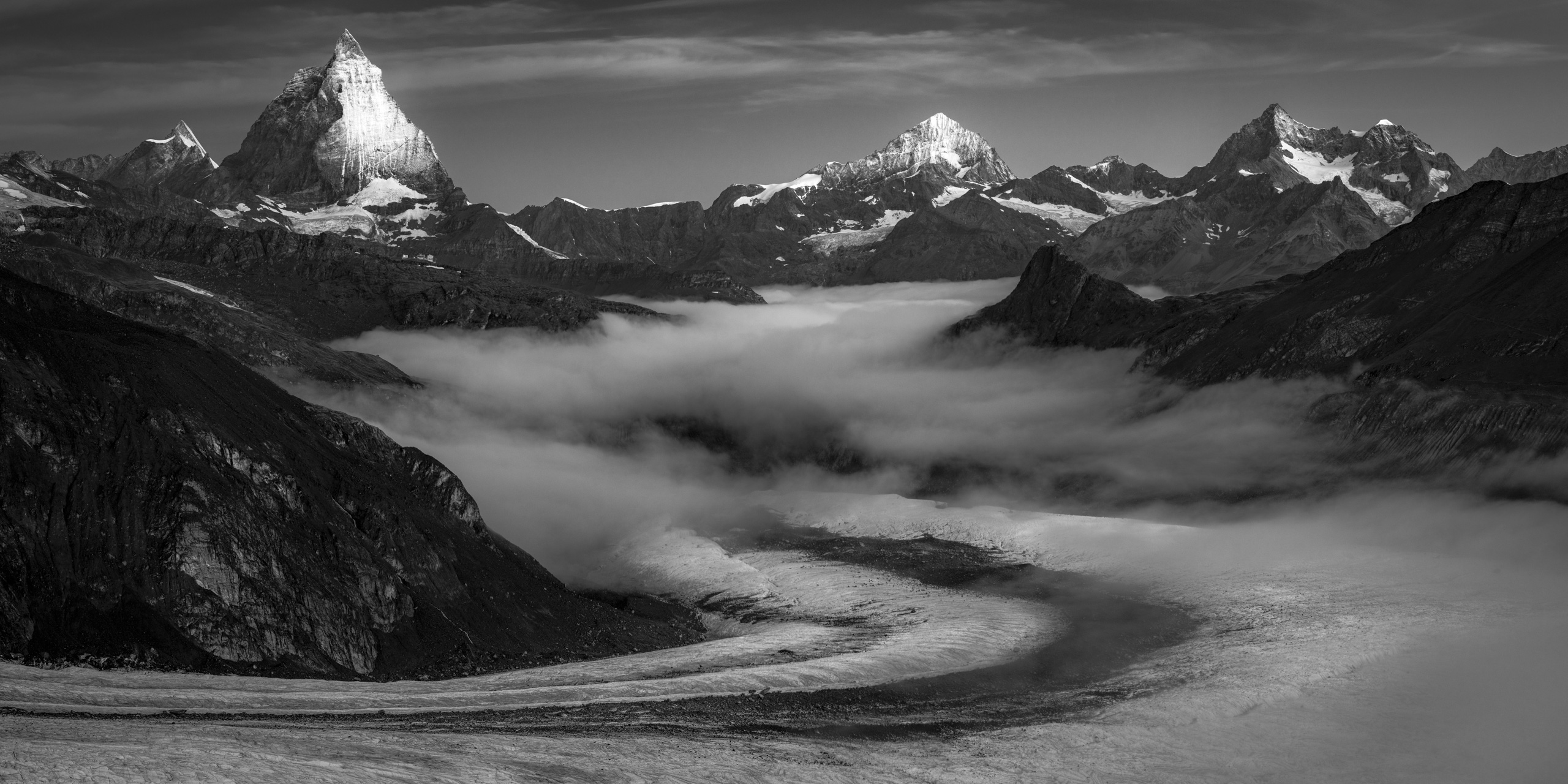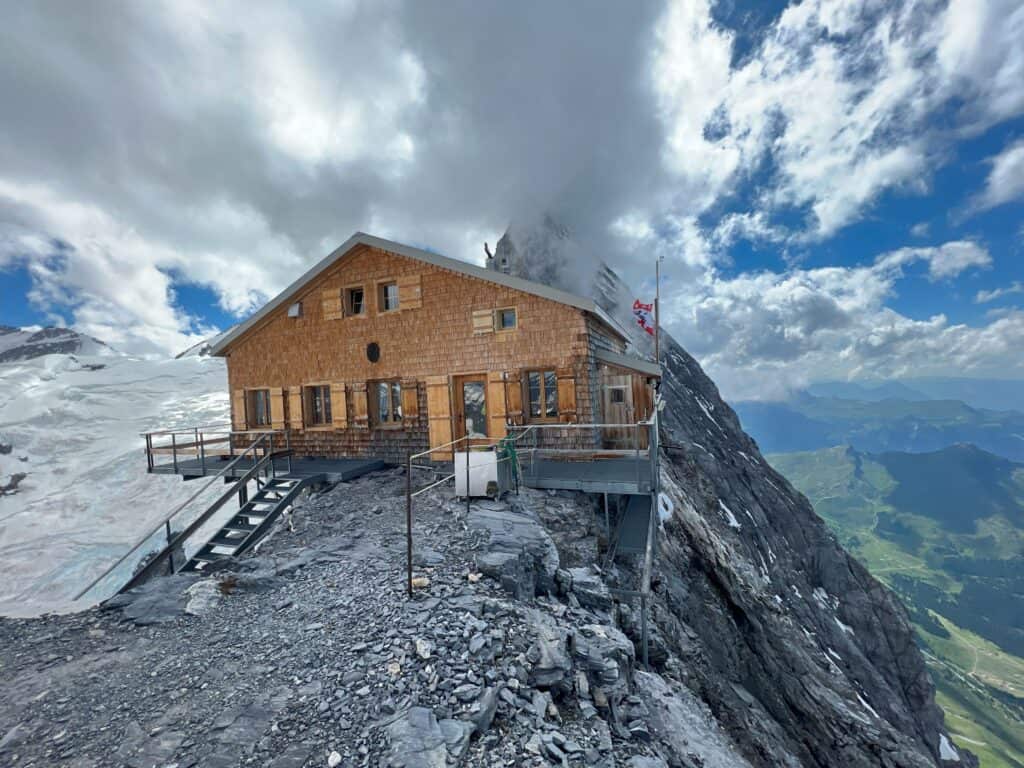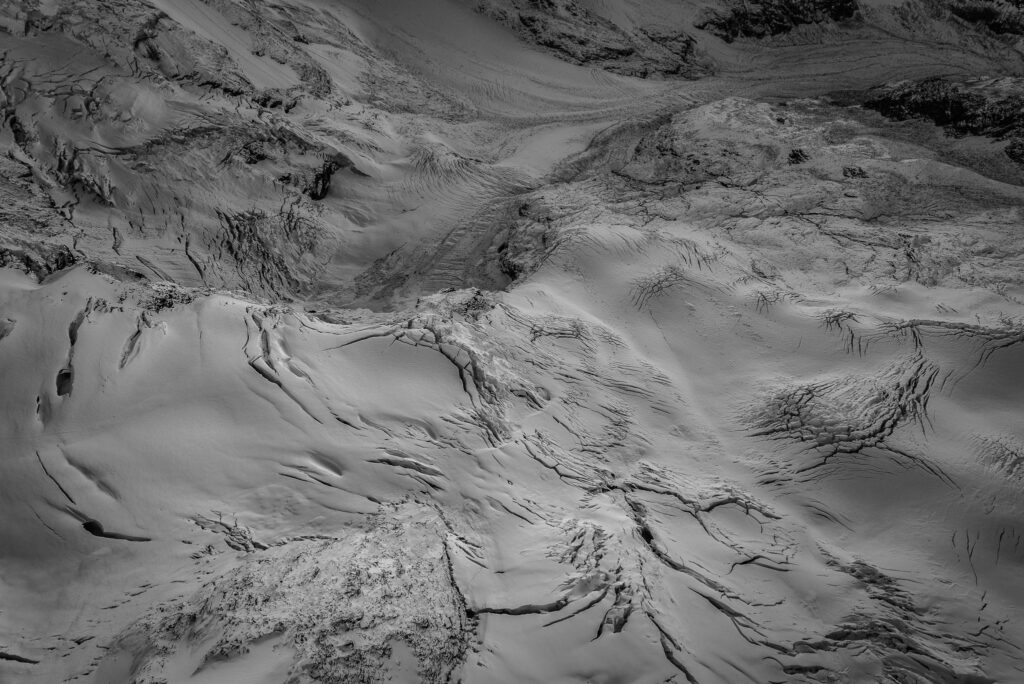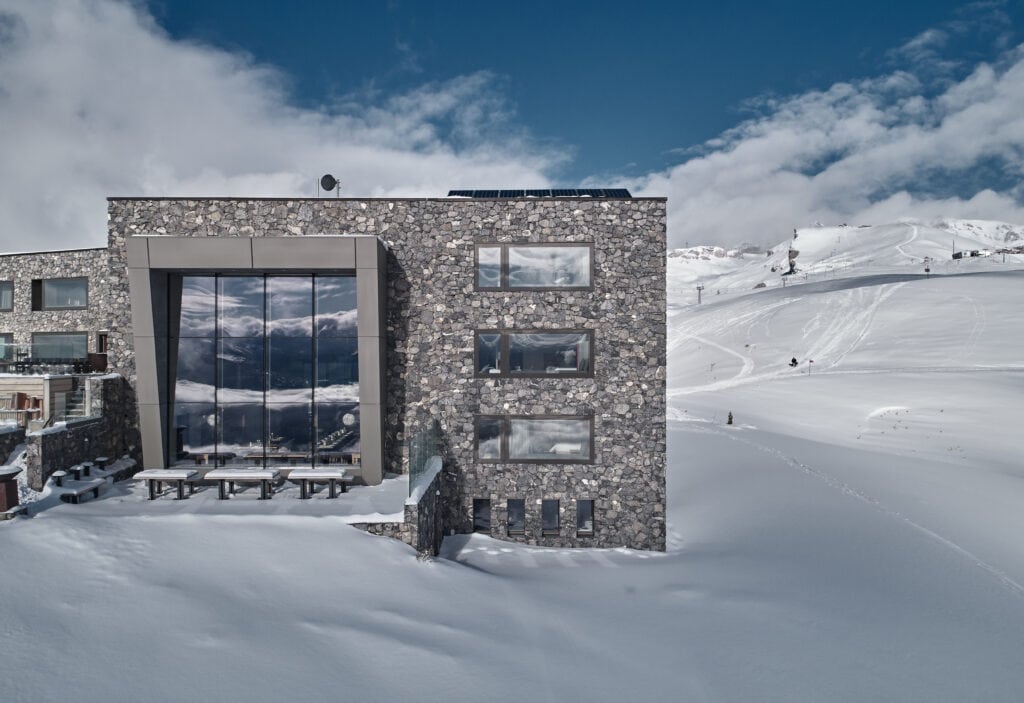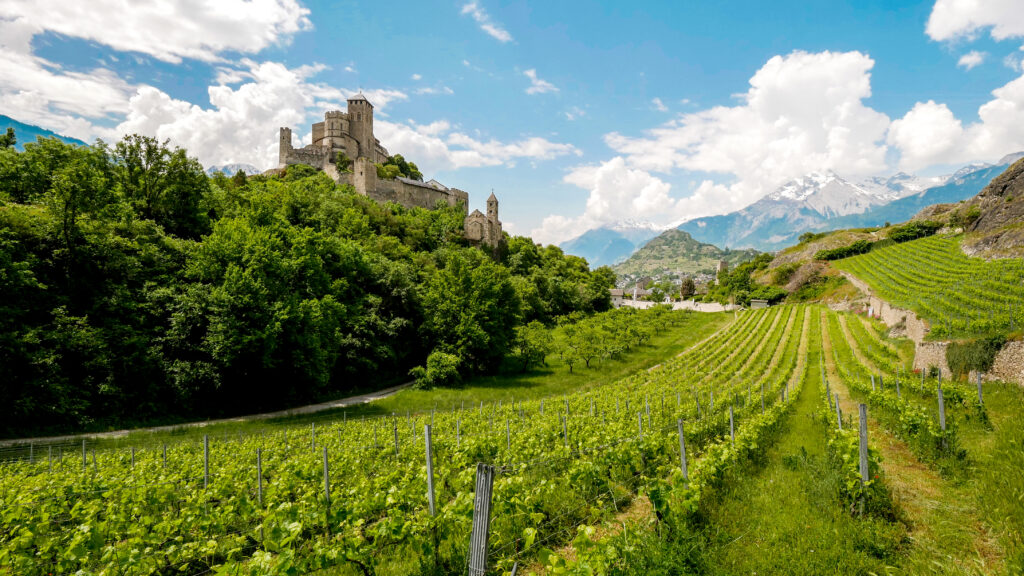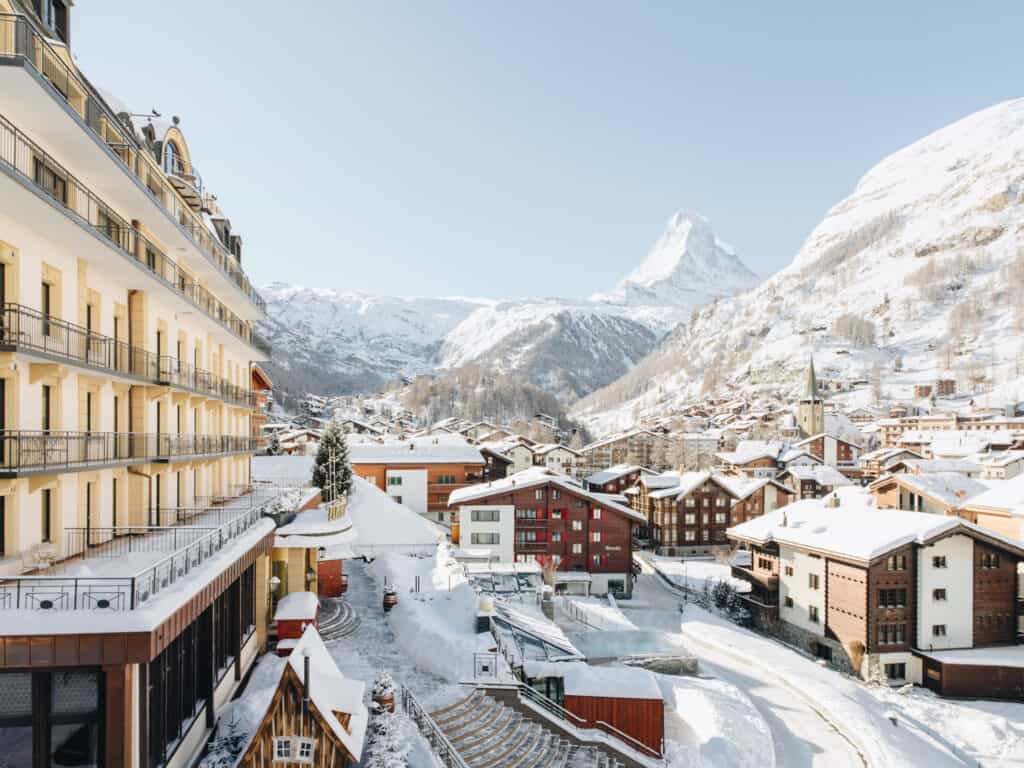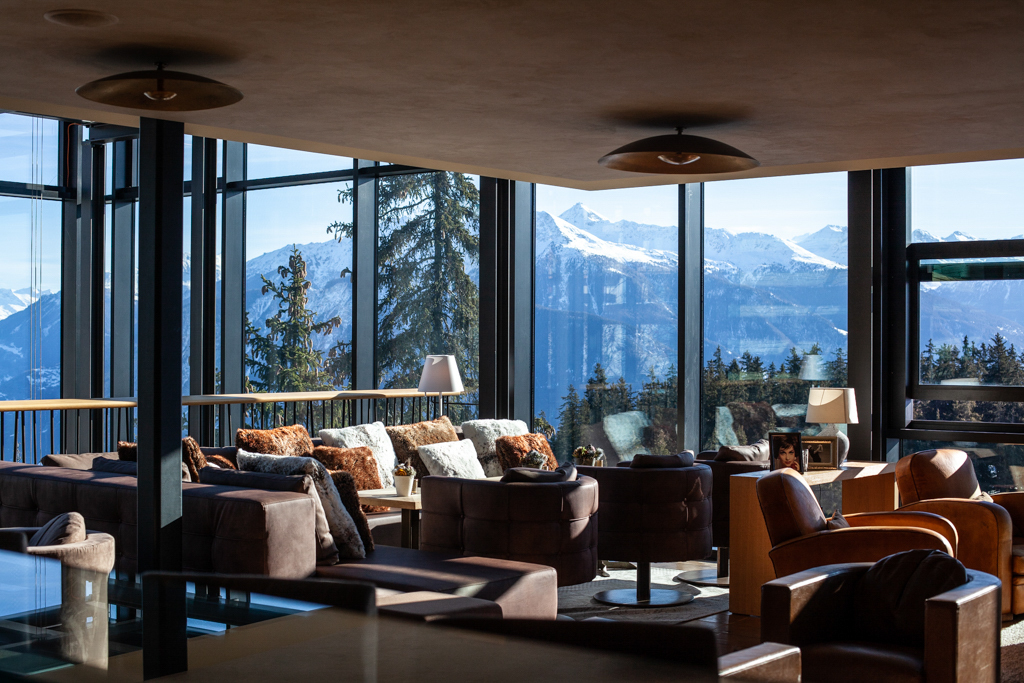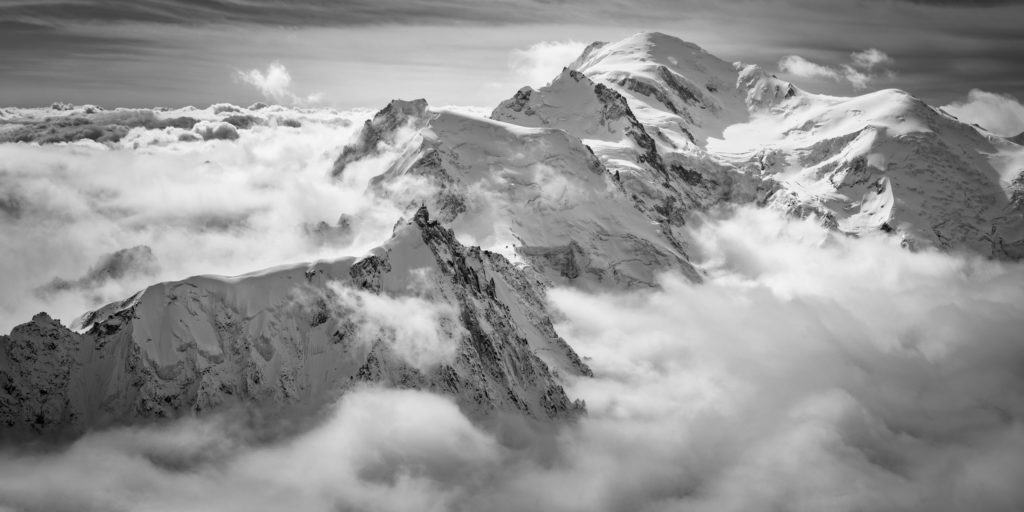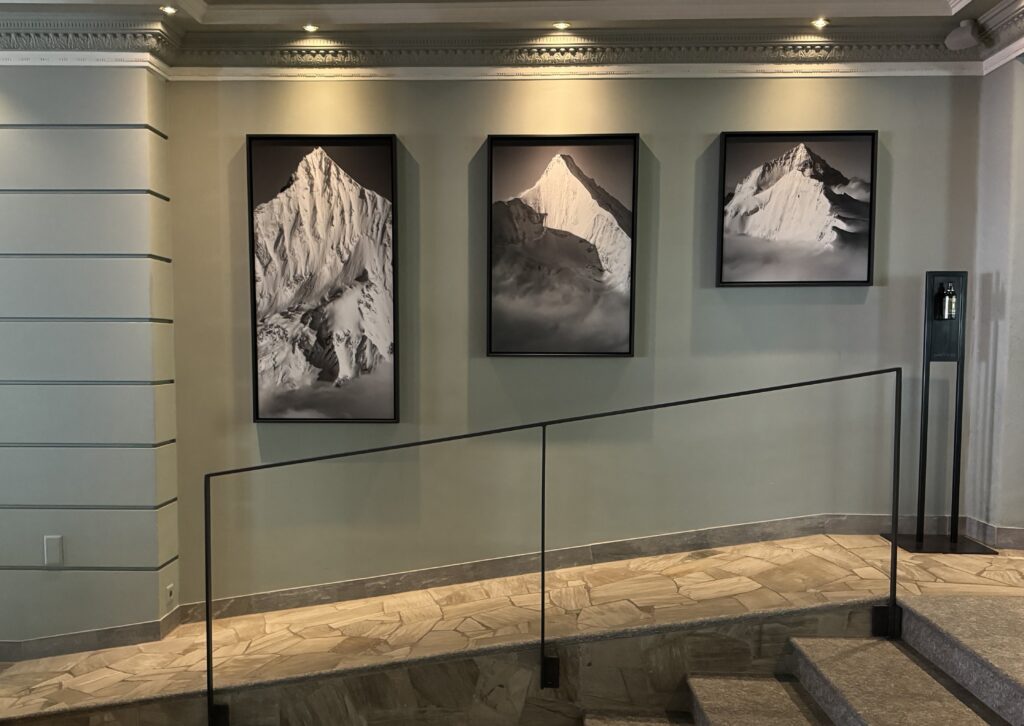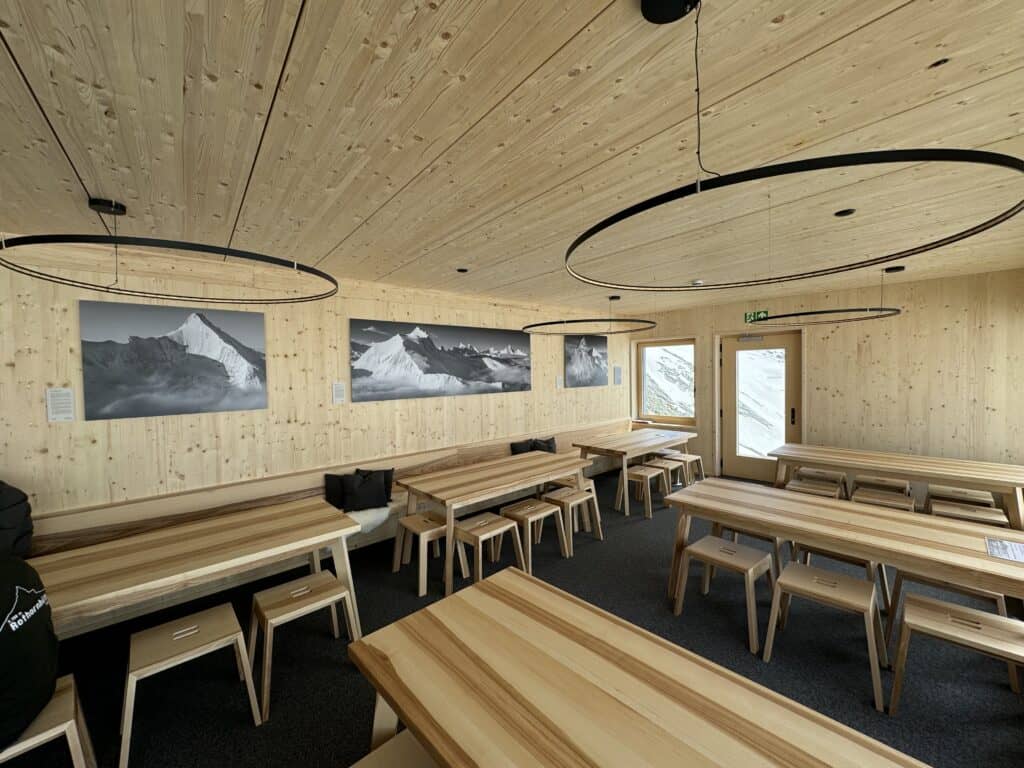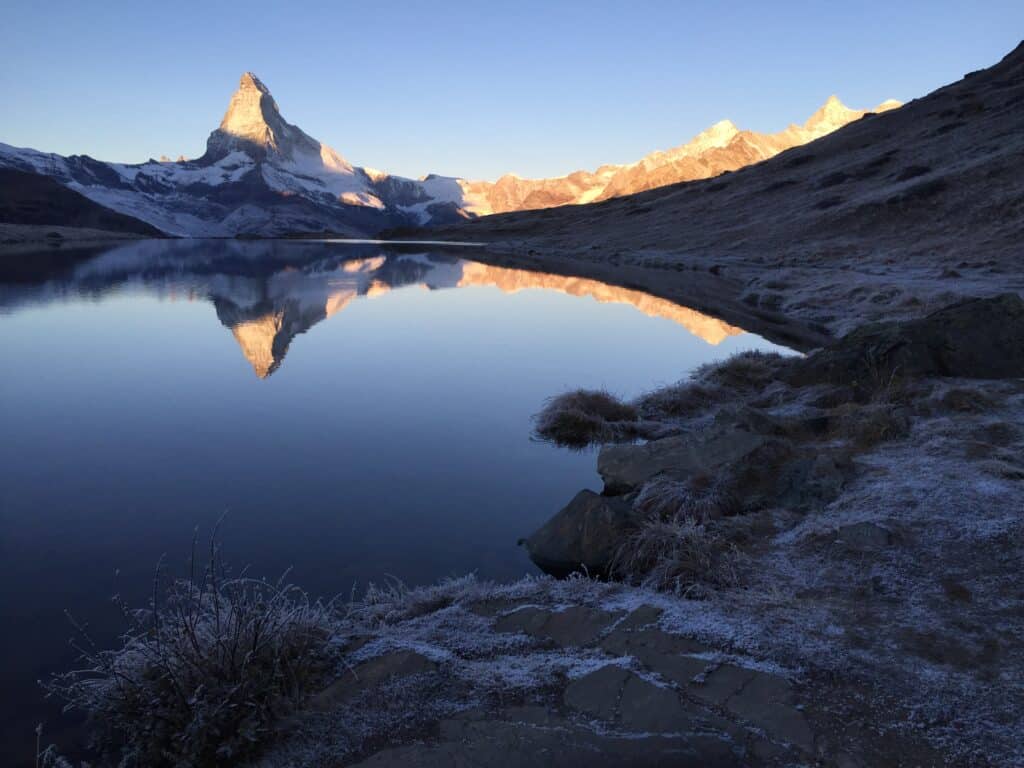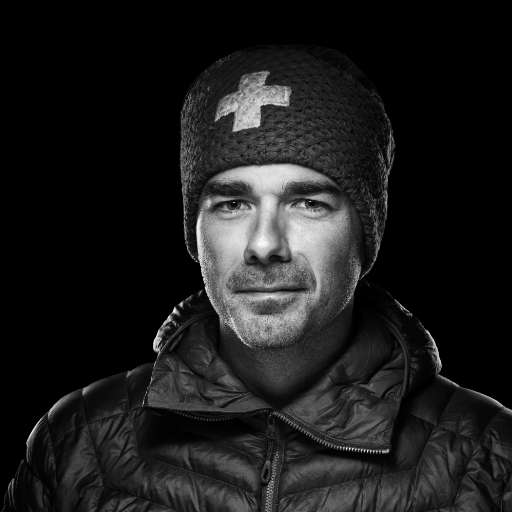On the heights of Zermatt, in the azure shadow of Monte Rosa, lies a hideaway like no other. An exceptional alpine refuge whose elegance honors the grandeur of the Alps. The Monte Rosa hut, glittering and warm, allows us to discover the unsuspected beauties of a striking natural environment. And it was on my way here, many years ago, that I first felt the power of a glacier beneath my feet. An imperishable memory for a fledgling photographer confronted with the vibrant memory of high mountains. This is the story of the Monte Rosa hut, a rock crystal in the heart of the Swiss Alps.
The Monte Rosa Hut in the Swiss Alps Zermatt
Under the aegis of the most famous summits Valaisans and their prodigious glaciers, the Monte Rosa hut rises to an altitude of 2883 metres. Under the aegis of Dufourspitze, Nordend and Lyskamm, it is the starting point for a number of must-do alpine tours. From mid-March to mid-May, skiers frequent the refuge, which also welcomes heli-skiers on their descent from Mont Rose. Between June and September, hikers and mountaineers come to the Monte Rosa hut to experience memorable moments of their own.
When you get off the Gornergrat train, the path leading to it is undoubtedly one of the most beautiful in the Alps. From Rotenboden station, it leads us beyond the verdant peaks to a world where whiteness floods the rocks. Our footsteps tread the eternal ice of the Gornergletscher under the benevolent gaze of the Matterhorn on the horizon. A 4-hour hike for a memorable epic on the edge of heaven and earth. This route is a fabulous adventure in itself. As they pass through the vastness of the glacier and reach for the sky, visitors to Monte Rosa are overwhelmed by the beauty of the panorama unfolding before them.
Then, from the glittering hut, we admire the Monte Rosa mountains and the titans of ice that flow at their foot. The Matterhorn, emblem of the Swiss Alps and ruler of Zermatt, also comes into view. From the refuge's terrace, visitors can contemplate a dazzling horizon, punctuated by the cadence of peaks rising to over 4,000 meters. And to round off the experience, the refuge team offers a range of delicious meals, accompanied by subtle wines that leave a pleasant taste on the lips.
From Cabane Bétemps to Cabane Monte Rosa | History of a refuge in the heart of the Valais region
In 1895, a modest-looking wooden refuge was built at the foot of Mont Rose. It was built thanks to a bequest from engineer François Bétemps and financing from the Seiler family, a famous hotel dynasty from Zermatt. Named the Cabane Bétemps after its founder, the building has a single room that can accommodate 25 visitors. Owned by the central committee of the Swiss Alpine Club (SAC), it grew from strength to strength. By 1918, it could accommodate 45 people. And in 1929, its fate was entrusted to the Monte-Rosa Section of the SAC, who in return undertook to enhance it. The wooden structure was then covered with a thick coat of stone. Now equipped with sturdy walls, visitor numbers soared at a time when winter tourism was booming.
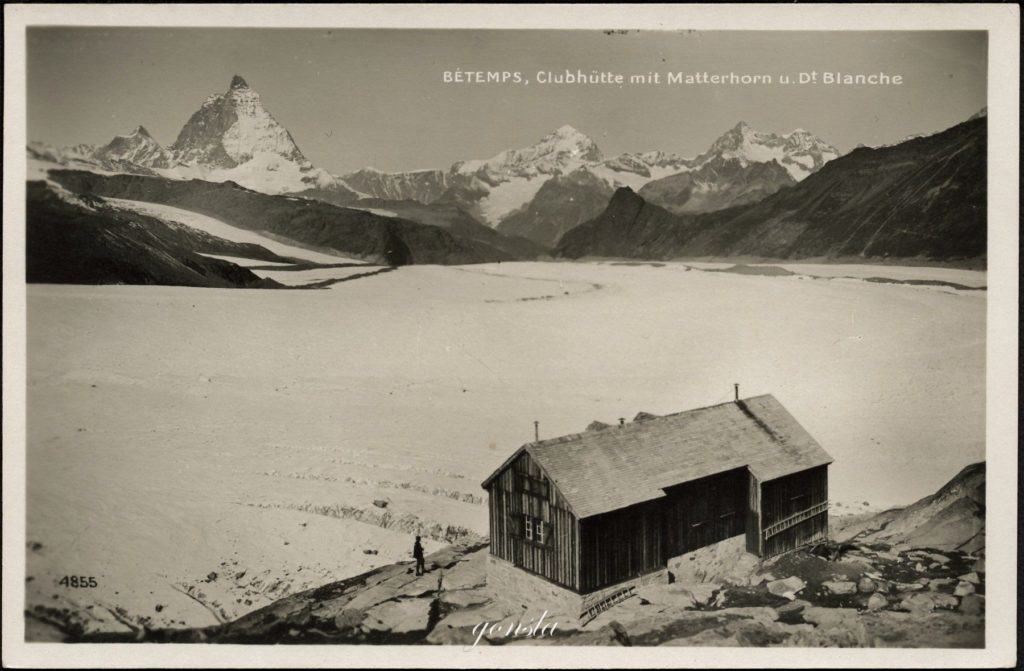
In 1939, the alpine hut was transformed from a single living room into two separate rooms, one for cooking and the other for sleeping. 96 beds occupied the dormitory, and since then the hut has been known as the Monte Rosa Hütte. Visitors flocked and the hut flourished. The kitchen was renovated in 1957 and 30 beds were added to the attic in 1972, bringing the total number of places available in the hut to 126. But man is such that he defiles nature wherever he settles. And the mountains are gradually seeing the accumulation of waste and materials around their glaciers. So, in 1972, under the impetus of the Union Internationale Alpine des Guides de Haute Montagne (UIAGM), the Monte Rosa hut became a pioneer of clean-up operations in the Swiss Alps.
Between 1982 and 1984, the aging hut underwent another facelift. It was to be modern and more self-sufficient. Equipped with solar panels, a mini-water treatment plant, a drinking water pumping station and cisterns, it could now accommodate 160 visitors. However, technical deficiencies became more and more frequent, and the equipment quickly fell into disrepair. In 1996, a new access road to the hut was built on the Gornergletscher. However, the increasingly rapid melting of the glacier made this route unstable. Its upkeep demanded constant attention from the then janitor, Sepp Grubber. He finally resigned in 1999, after serving the Monte Rosa hut for 29 years.
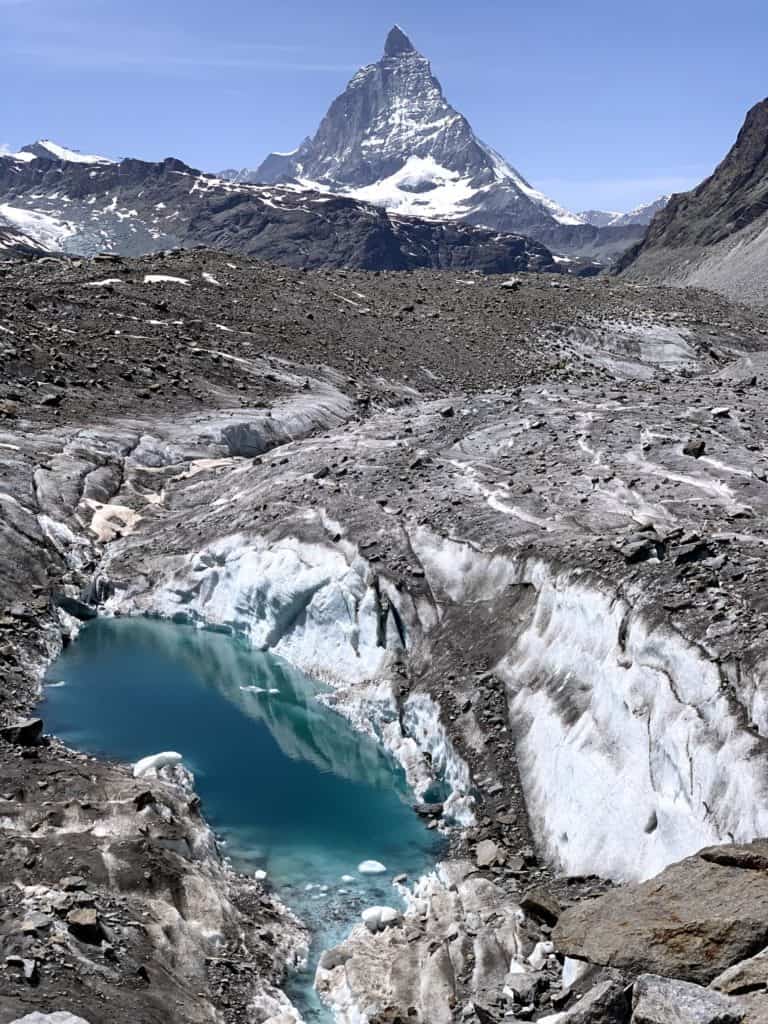
Monte Rosa Hut | Rock crystal in the Valais Alps
Over the years, the Monte Rosa hut has fallen into disrepair. From a prized refuge, it gradually became a dilapidated shelter. Renovation seemed inevitable. Its rebirth is a matter of survival. But as fate would have it, the refuge was destined for an exceptional destiny. In 2003, to mark the 150th anniversary of its foundation, the Swiss Federal Institute of Technology Zurich (ETHZ) wanted to develop an ambitious and innovative project, combining cutting-edge technology with respect for the environment. The choice fell on the rehabilitation of the Monte Rosa hut, world-famous for the beauty of its glaciers and surrounding mountains. An architectural competition was held, and first prize was awarded in 2005 to the "glänzling" project, which proposed to transform the Monte Rosa hut into a futuristic, jewel-like building. The Monte Rosa hut is about to emerge from its chrysalis and offer its fabulous wings to the Alps. A flamboyant crystal born of a thousand-year-old rock. A celestial masterpiece born of man's imagination.
The die was cast. In 2008, Mount Rose entered a new era. Zermatt was in turmoil, and the mountain held its breath. The project is avant-garde and the result spectacular. The new refuge was inaugurated with great fanfare on July 10, 2010. The order was then given to demolish the old hut, which was dynamited by the Swiss army in 2011. A new page in the history of the Alps was opened.
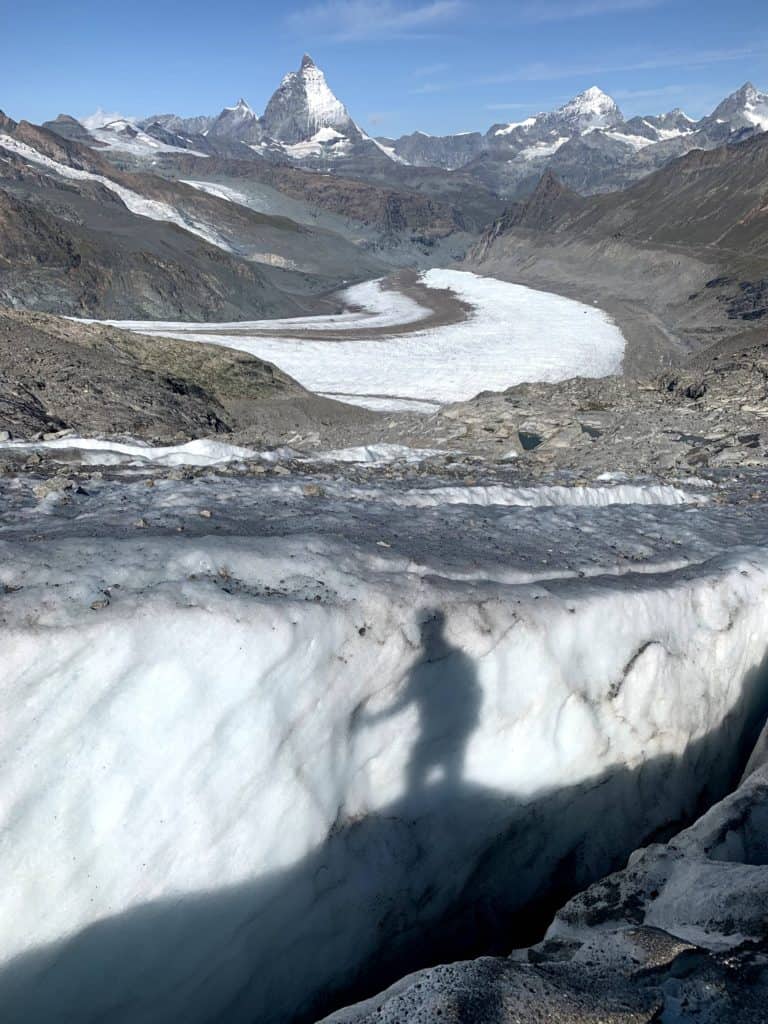
The success was immediate. Visitors number in the thousands, curious to discover this exceptional hut and the splendor of the Valaisan summits . From 2015 to 2019, the Monte Rosa Hütte was managed by Peter Rubin, and in 2019, Richard Lehner and Kilian Emmenegger took over as janitors of this unique structure, the Monte Rosa Hütte, the flagship of alpine refuges.
La cabane du mont Rose | At the cutting edge of technology and sustainable development

A pioneering building, the Mount Rose Cabin stands out for its architectural boldness and environmental commitment. Its wooden structure rests on concrete and steel foundations anchored in the underlying rock. The five-storey structure accommodates 120 beds and a vast refectory. The décor is simple and warm, all in wood. This dining room offers visitors the absolute pleasure of savoring gourmet cuisine while enjoying a breathtaking view of the mountains. Its large bay windows also provide the various spaces with incredible luminosity. And the exterior aluminum cladding gives the cabin the silvery sheen of a rock crystal. The entire hut draws on the purity of the sky and the grace of summits to blend into the splendor of the Alpine landscape.
More than an architectural gem, the Monte Rosa hut is at the forefront of energy technology. A forerunner in the field of sustainable development, the hut produces 90% of the energy required for its operation. This incomparable degree of autonomy is due to the integration of photovoltaic panels on the south-facing façade, combined with solar thermal collectors. The energy produced throughout the day can be stored in batteries to guarantee a constant supply of electricity to the building. A thermal power station fuelled by rapeseed oil and a hot-air recuperator completes the installation. In particular, it enables us to cope with the vagaries of the weather and peaks in consumption.
The Monte Rosa hut is also at the cutting edge of environmental protection. Every summer, water from melting glaciers is collected and stored in a huge underground reservoir. Visitors can thus enjoy running water all year round, even in winter. A wastewater recovery and filtering system also supplies recycled water to the refuge's toilets.
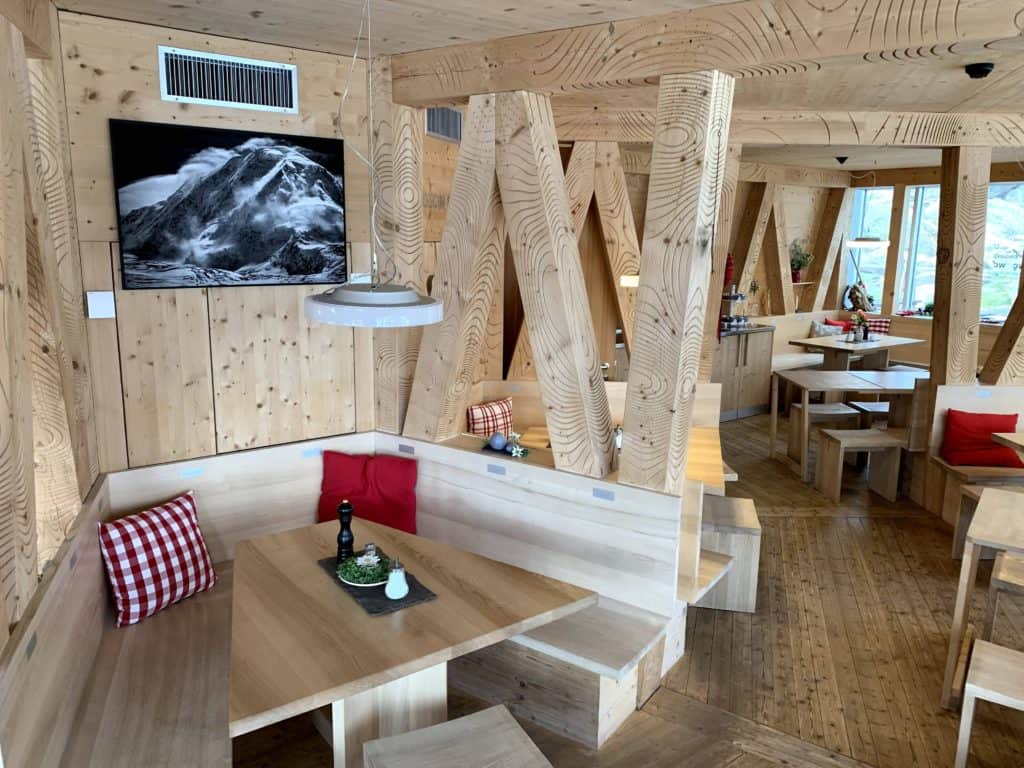
The Monte Rosa Hütte is a model of technological innovation and sustainable development. Thanks to its IT system, ETH Zurich is able to collect all the data generated by its operation in real time. The aim of the researchers is to constantly improve its management. Understanding the constraints faced by the hut, studying the ecosystem of a building capable of self-sufficiency at such a high altitude. These are the issues at stake in the search program, which will undoubtedly give new impetus to the construction sector. Combining the mastery of new technologies with respect for nature and future generations.
From a simple wooden shelter, the Monte Rosa hut has metamorphosed into a model refuge. But beyond the glamour of its world-renowned reputation, I still have an unwavering attachment to it. Nurtured by my many stays within its walls, my affection for it is unchanging and deep. The fruit of my greatest ascents and my most remarkable works.
